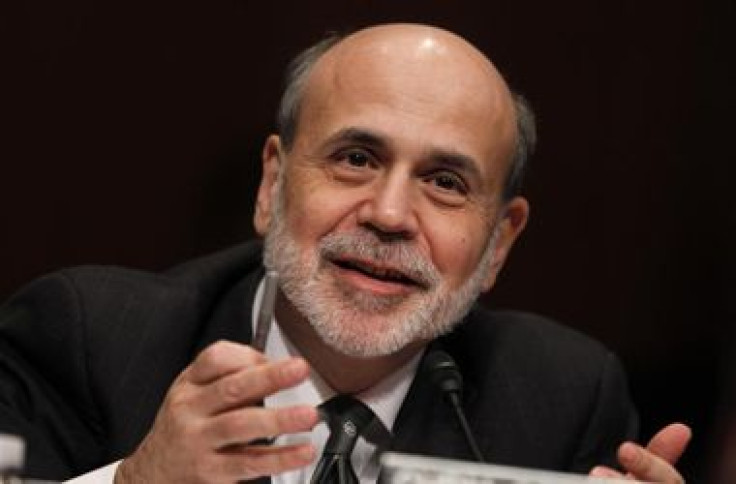July FOMC Minutes Show Fed Officials Divided Over Tapering Schedule; Offer Few Clues On QE3

The minutes from the July 30-31 meeting of the U.S. Federal Open Market Committee (FOMC) showed Federal Reserve policymakers backed Fed Chairman Ben Bernanke’s stance that the central bank should begin winding down the $85 billion-per-month asset purchase plan later this year if the economy continues to improve as they expect. But the minutes offered few clues about whether the tapering would happen in September, October or December -- the three remaining FOMC meeting dates of this year.
Almost all of the 12 members of the FOMC agreed a change to the stimulus was not yet appropriate at the July meeting. Only a few Fed officials thought “it might soon be time to slow somewhat the pace of purchases as outlined in that plan,” according to the minutes released Wednesday. Meanwhile, others emphasized the importance of being patient and evaluating additional information on the economy before deciding on any changes to the pace of asset purchases.
“Almost all participants confirmed that they were broadly comfortable” with the committee moderating “the pace of its securities purchases later this year,” the minutes showed.
Economic data since the July meeting have been mixed and inflation is still running below the Fed’s 2 percent target. Given the fragility of that recovery, the Fed is being very cautious about tapering talk.
Increased fears among market participants that more expensive mortgages will bring the recent recovery in the U.S. housing market to a shuddering halt is also something the Fed is closely monitoring.
The 10-year Treasury yield, which was down at 1.6 percent early in May, reached 2.90 percent on Monday. That’s the highest level since July 2011. The 10-year note is a benchmark for both mortgages and corporate bonds.
The Fed minutes are released a day before the Fed's annual symposium gets underway in Jackson Hole, Wyo. In contrast with recent years, this year’s conference – scheduled for Aug. 22 through Aug. 24 – is unlikely to be a market mover due to the lack of Fed panelists and the participation of foreign central bankers. Bernanke, who is nearing the end of his tenure, announced earlier this year that he would not attend due to a “personal scheduling conflict.”
The central bank has been buying $85 billion in government and mortgage bonds each month as a temporary measure to keep interest rates ultralow and stimulate the U.S. economy. The Fed has said it plans to hold its key short-term rate at a rock-bottom level at least as long as the unemployment rate stays above 6.5 percent and the inflation outlook remains mild.
The Fed has said it is waiting for the labor market to improve “substantially” before it starts to taper.
Employers created 162,000 jobs last month, the Labor Department’s July nonfarm payroll showed. The figure is weaker than analyst expectations of 185,000 new jobs. Job gains for June and May were also revised lower. The number of new jobs created in June was revised down to 176,000 from 195,000, and June’s increase was trimmed to 188,000 from 195,000. Over the past 12 months, the economy has added an average of 189,000 jobs a month.
The unemployment rate fell from 7.6 percent to 7.4 percent -- the lowest since December 2008 and below the forecast of 7.5 percent.
Policymakers will get another jobs report a few weeks before the Fed's Sept. 17-18 meeting.
The U.S. economy grew from April through June at a lackluster rate of 1.7 percent.
The second-quarter gross domestic product report, while showing lackluster growth of 1.7 percent, contains information that suggests that the second half of the year will see faster growth than the first half. Still, economists are hopeful that with a rebound in consumer spending, growth could improve to around 2.5 percent in the third and fourth quarters.
Therefore, at the moment, the main risk to growth is the return of fiscal uncertainty.
When Congress returns from its “August” recess on Sept. 9, they will have to face several hurdles, including the expiration of the resolution to fund the government through the end of September and the need to raise the debt ceiling. Their inability to act could result in a temporary government shutdown and a breach of the debt ceiling.
The return of fiscal uncertainty may even give the Fed policymakers an additional reason to hold off on tapering at their Sept. 18 meeting. The upcoming fiscal deadlines means that the FOMC will be meeting during the height of the upcoming budget battles. Fed officials may want to leave their insurance policy in place until the battle is resolved.
© Copyright IBTimes 2024. All rights reserved.












